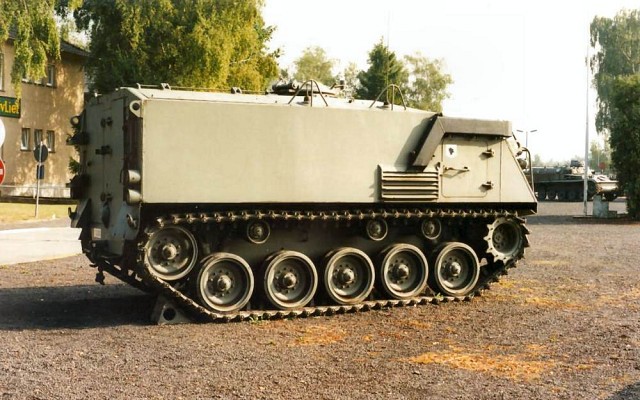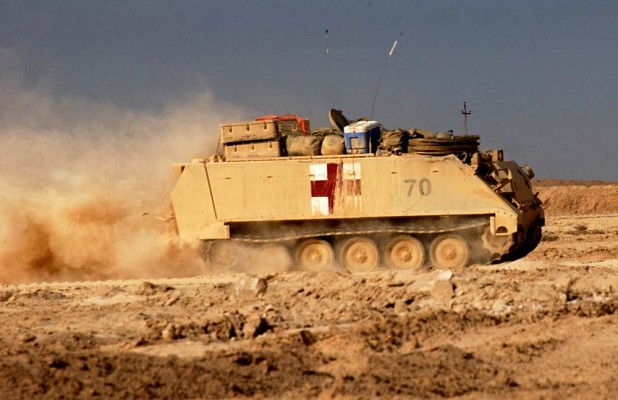M75
Overview
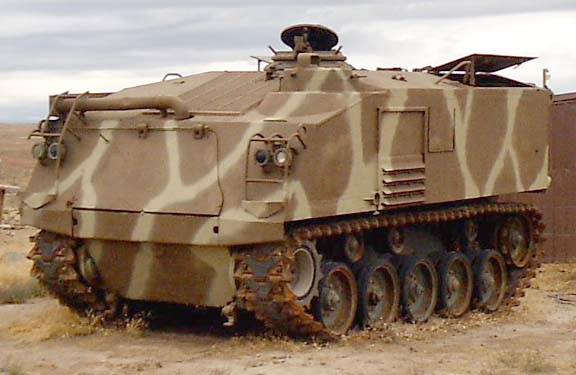
M75
M75 armored personnel carrier.
Source: Donald Roberts @ Idaho Motor Pool -
© copyright lies with original owner
United States - International Harvester Corporation
T18, T-18E1, T18E2 (prototype models)
Belgium
Description
Introduction
The M75 is an early Cold War era armored personnel carrier of US origin. It was developed in the late 1940's by the International Harverster Corporation to replace the halftracks used in World War 2. The M75 was the first design in a series of US armored personnel carriers that resembles a metal box on tracks. Although the M75 functioned quite well and had a good level of protection its huge cost, high weight and limited mobility resulted in production to be halted early. As a result the M59 and later the successful M113 were developed, both vehicles share the general layout of the M75.
Layout
The M75 looks like a box on a tracked chassis, which was derived from the chassis used on the M41 light tank. The driver is seated at the front left with the engine to his right. The crew compartment is located at the rear and is accessed by two doors in the rear.
Firepower
The M75 is armed with a single 12.7mm M2HB heavy machine gun on a ring mount for which 1.800 rounds are carried.
Protection
The thick steel hull provides the crew from small arms fire and shell splinters. The armor thickness is greater than needed for stopping 7.62mm rounds, but is not fully adequate for stopping 12.7mm rounds. An NBC system and smoke grenade dischargers are both lacking.
Mobility
The tracked chassis allows the M75 to cross allmost any terrain. Due to the heavy weight the M75 is not amphibious and has a limited mobility. The average speed is low, although a top speed of 71 km/h can be achieved. The operational range is very limited due to a high fuel consumption. Propulsion is provided by a Continental 295 hp gasoline engine.
Users
The main user of the M75 was the US Army and the M75 was actively used in small numbers in the Korean war. After the war it was replaced by the lighter M59 and large numbers ended up in Belgium and a smaller batch in Ethiopia. Since the early 1980's the M75 is no longer in service.
Details
Media
Related articles
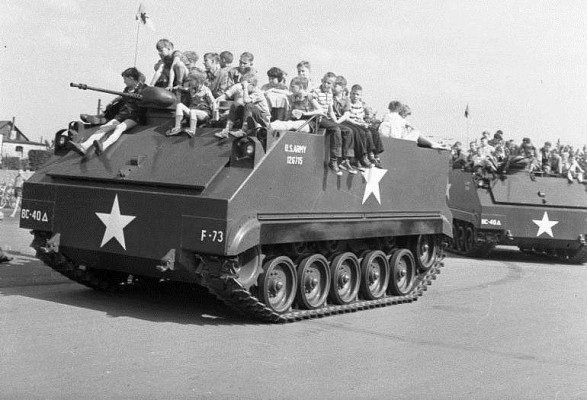
M59
The M75 was replaced in service by the cheaper, smaller and more mobile M59.
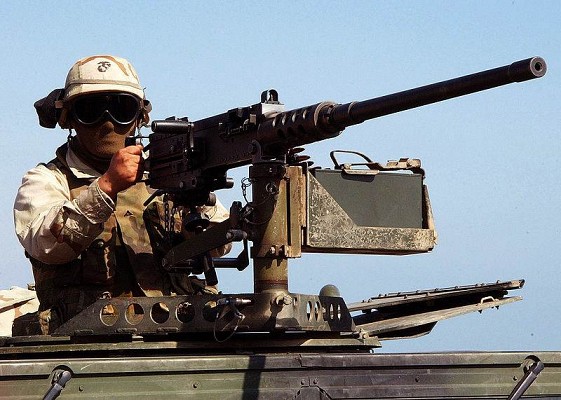
Browning M2HB
The 12.7mm M2HB heavy machine gun is used on a pintle mount on the roof of the M75.
